|
|
|
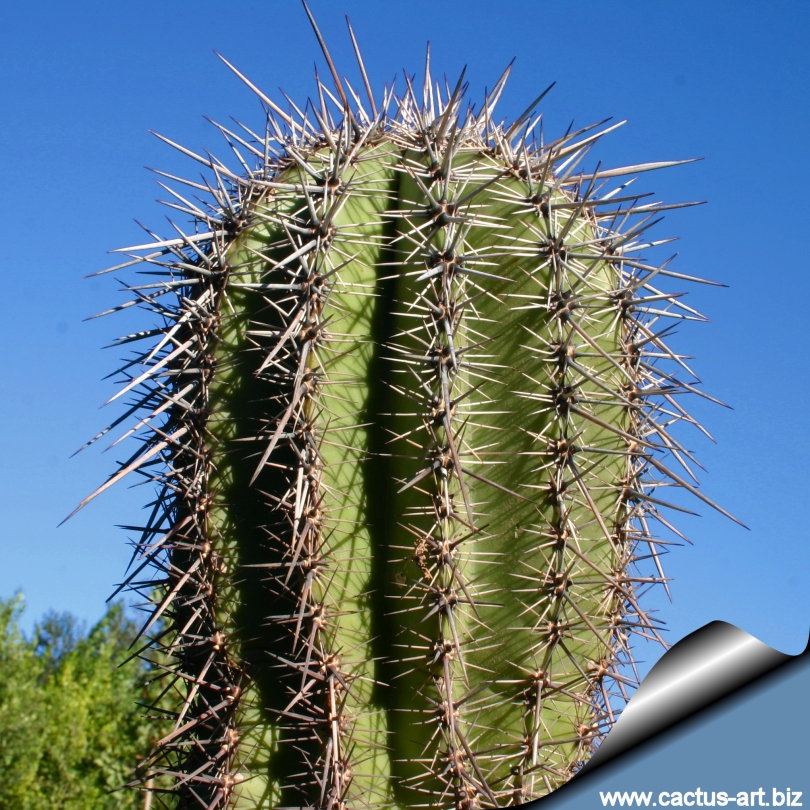
The
saguaro is probably the most famous cactus in the world. Almost everyone
has heard about this majestic symbol of the desert.
|
|
Saguaros life: One saguaro produces tens of thousands of seeds in
a year, and as many as 40 million in a lifetime of 175 to 200 years, but
out of all the seeds that a saguaro produces in a lifetime, few will
survive to adulthood.
A saguaro's growth is extremely slow. After 15 years, the saguaro may be
barely a foot tall. At about 30 years saguaros begin to flower and
produce fruit. By 50 years-old the saguaro can be as tall as 2 m. After
about 75 years on average, it may sprout its first branches, or "arms".
By 100 years the saguaro may have reached 7,5 m. A n adult saguaro is
generally considered to be about 125 years of age. Saguaros may live
at least 150 years. Giant Saguaro or more attain the grandest sizes, towering as
high as 15 m or more and weighing 10 tons, sometimes more, dwarfing every
other living thing in the desert. Saguaros rank among the largest of any
cactus or desert plant in the world. The average life span of a saguaro
is at least 150 - 175 years of age. However, biologists believe that
some plants may live over 200 years.
One of the largest saguaros known to exist possessed these amazing
statistics: It lived 300 years, was over 12m tall, had 45 arms, and weighed
13 tons!
|
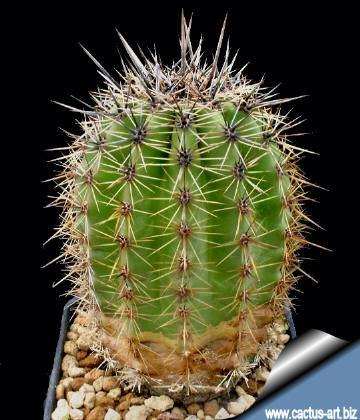 |
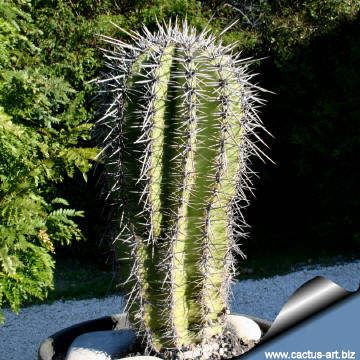
27 years old. |
Flowers: Form a cluster of creamy white petals around a dense
group of yellow stamens, on a 6-10 long tube. Though normally found at
the terminal end of the main trunk and arms, flowers may also occur down
the sides of the plant. Flowers will continue to be produced throughout
a saguaro's lifetime.
The saguaro has more stamens per flower than any other cactus flower.
|
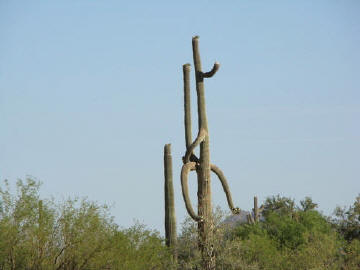 |
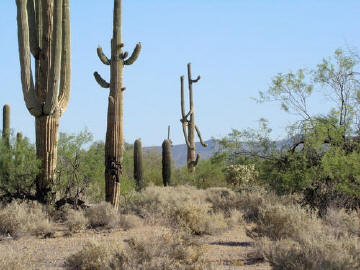 |
|
Photo and ©
copyright by Roberto González (Mexico)
Photo taken from the Federal
Highway number 2, at 15 km from Sonora Sonoyta, Mexico (250 ms in front
of the entrance to Santo Domingo), going in the direction of
San Luis Río ( 31°55' 47" N and 112°59' 00" W)
The photo shows a
strange shaped Sahuaro with distorted branches. Sometimes when the
gravity force is exerted on a branch in its most plastic stage,
especially if it occurs in combination with drought, drooping will
occur. New growth can take a new direction.
|
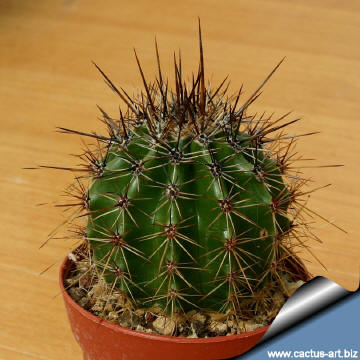
7 years old |
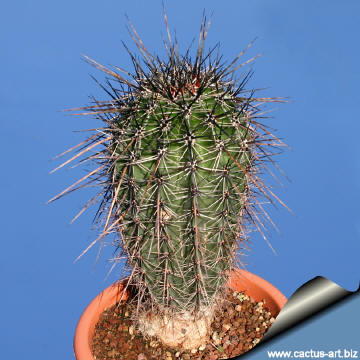
20 years old |
|
Photo of conspecific taxa, varieties, forms and
cultivars of Lobivia (Echinopsis) pentlandii .
of
plants belonging to the Lobivia...
complex
(This
Taxon
has lots of synonyms
(like most Lobivia), with several controversial varieties and subspecies):
Advertising
|
|
|
|
|
Family:
Cactaceae (Cactus
Family) |
Scientific name: Carnegia gigantea (Englem.) Brit &
Rose
Common names: Saguaro, Giant Cactus.
Synonymy: Cereus giganteus
Origin: USA ArizonaHabitat:
Sonoran Desert, wherein the range is limited by freezing temperatures in
winter. Saguaros are also limited by elevation. They are generally found
growing on rocky slopes and well drained flats, from nearly sea level to
approximately 1100 m in elevation. Saguaros growing higher than 1100 m
are usually found on south-facing slopes where freezing temperatures are
less likely to occur, or are shorter in duration.
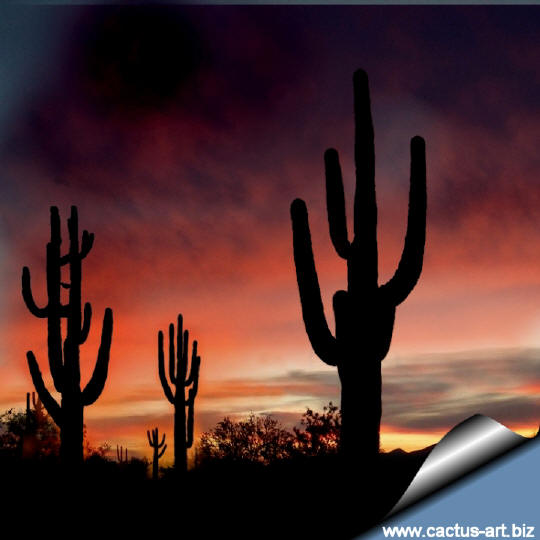
|
|
|
|
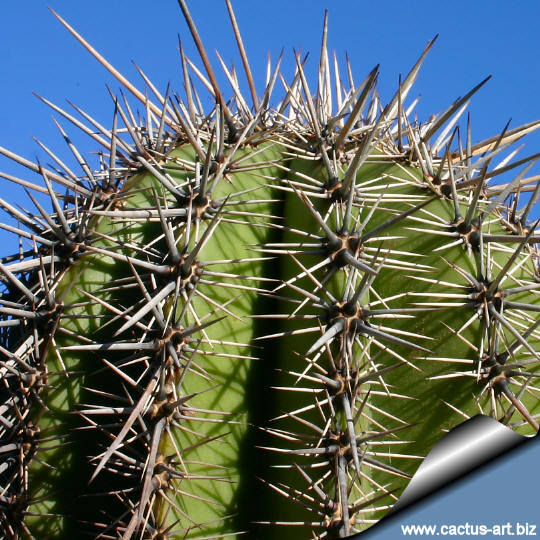 |
|
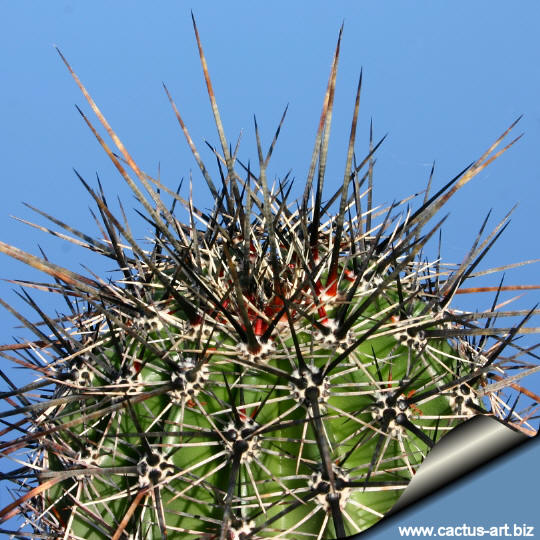
Younger spines are red.
Propagation: From stem cuttings (if available) in spring (let
them dry till the ends callous well. Then replant them in fresh cactus
soil that is ever so slightly moist, and keep it that way till they
root) or preferably by seeds. Seeds should be sown in a well-drained soil
mix. S urface sowing is the best; seeds germinate in 14-28 days at 20° C
.
Culture: Saguaros grow very slowly and are
cold intolerant. Make sure that your saguaros are not exposed to
freezing temperatures, or they may die. It
needs a well drained soil mix. Water regularly in summer but allow to dry
fully before watering again. During the winter months they should be
rather kept dry. Since they are big-sized plants, they need plenty of space
for their roots. Repotting should be done every other year, or when the
plant has outgrown its pot. Exposure: Light shade
when young, full sun later.

 |
|